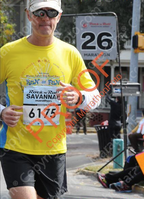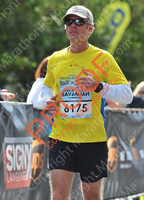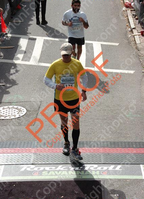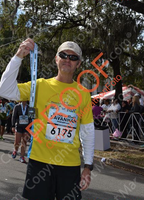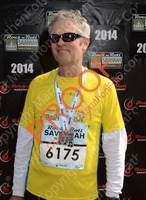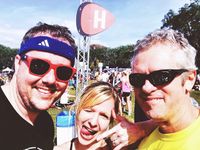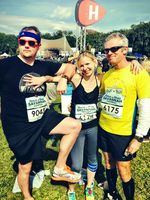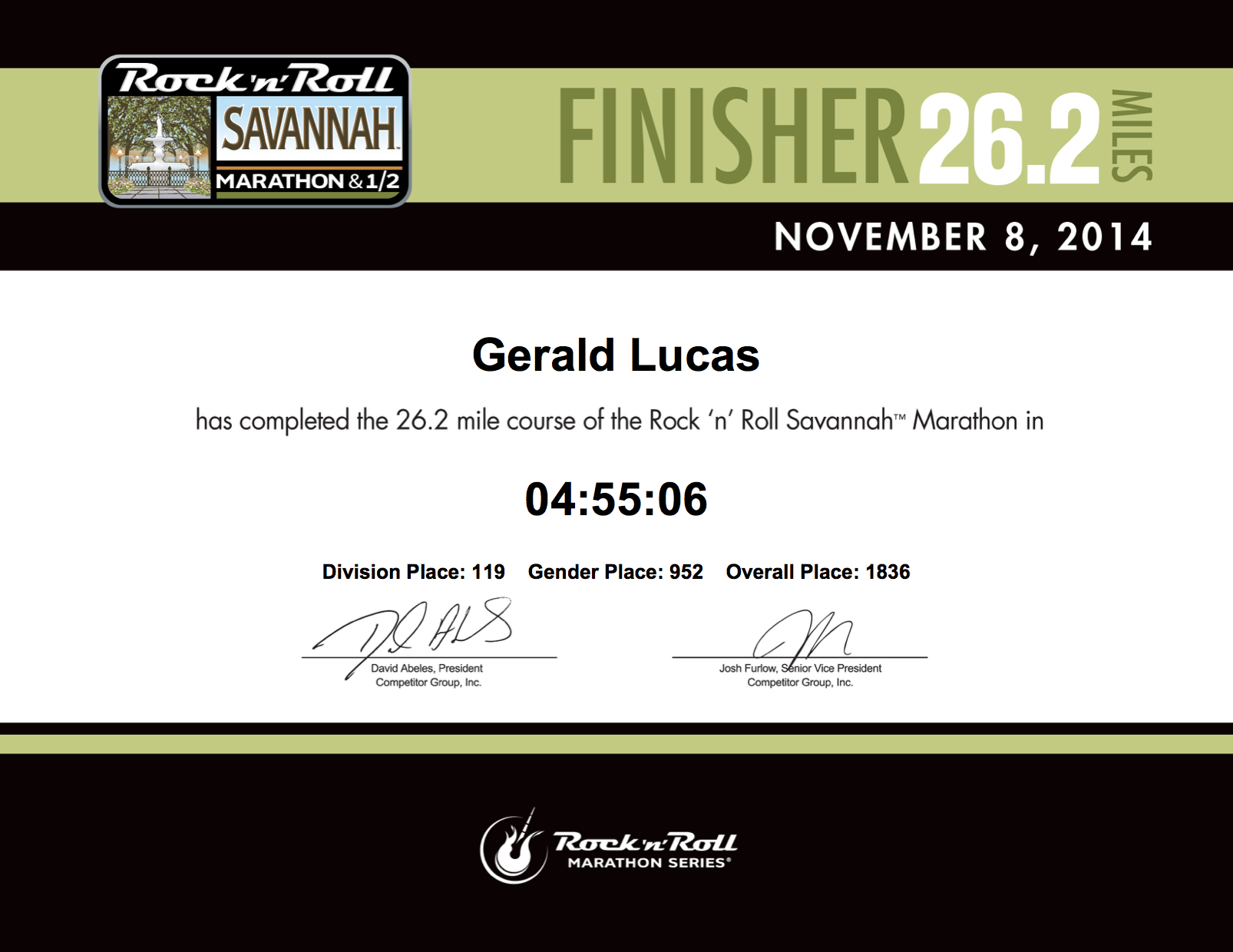My Twenty-Six-Point-Two
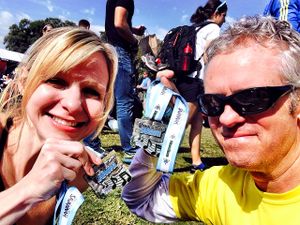
At mile eighteen, my legs rebelled. Like the Iraqi army facing Isis, they deserted — throwing down their weapons, ripping off their uniforms, and hoping to escape with their lives. As the General, I tried to rally the troops — “One more mile, you cowards!” — and they would briefly rally, but their defeat seemed inevitable and final against superior forces. I stopped to stretch at mile nineteen and thought about the 7.2 miles yet to cover. It might as well have been 70.2. The General was alone.
As we made our way to the starting line, the rosy fingers of dawn spread over Savannah. The anticipation of today’s race dispelled much of the morning’s chill as Heather, Chris, and I joined others making their way to the start. In the silent moments between waking-up conversation, I wondered if my inconsistent training over the last months would be enough to get me through my first marathon. Days before Heather had emailed that running a marathon is “90% psychological,” but my recent injury and slow recovery made me wonder if I had the physical abilities necessary for the task. Another friend recently commented that humans just aren’t supposed to run that far — even Chris Rock quipped a week before in his SNL monologue that “26 miles is a long drive.” I had chuckled nervously at each. Despite my doubts, the day promised to be beautiful as I joined the twenty-thousand others for the start of the Rock ’n’ Roll Marathon in downtown Savannah.
My journey to this first marathon spans many years. Near the top of my “Unlikely in Life List” — somewhere around “earning a Ph.D.” or “marrying the best woman in the world” — would be “running a marathon.” My brother, on the other hand, has always been athletic, so when he and my father stopped to see me on their way to the Disney marathon, it was no surprise. Of course Tim would eventually run a marathon — growing up he was always the lean and active Luke Skywalker to my more rotund and sedentary Jabba the Hut. I remember being truly impressed at his ambition. At the time, I had not known anyone who had even attempted a marathon. Tim, a meticulous engineer, detailed his weeks of training for the event with a confidence that betrayed no doubt of his success. Indeed, the next day I received a call from the finish line from my father: Tim had done it. Cool, I thought, he did it, so I don’t have to. That was about ten years ago.
I first began running during graduate school, but it wasn’t until I met Heather that I got serious. She smoked me. I actually thought I was a runner, but looking back I was chubby and lazy. I could barely run three miles at a pace that would make a turtle laugh. When Heather first came to Macon, she and I ran together a couple of times, but I stopped asking when it was clear I was holding her back. She was always kind about my failures, but I knew I was lame. She became my inspiration to stop messing around. I would either run, or I would stop pretending.
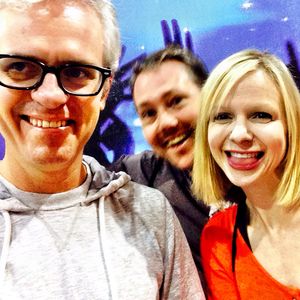
Over the next couple of years I started getting serious. I began running regularly. I increased my pace and distance. Most importantly, I dropped the forty pounds my central Georgia diet had added to my waistline and then took off twenty more. By the fall of 2012, I was leaner and faster than I had ever been. I exercised regularly, stabilized my weight with a diet I could maintain, and felt the best I ever had in my life. Pretty good for a dude in his forties.
Heather and I started doing regular long runs together on Sunday, usually between eight and thirteen miles at a comfortable pace — around 9:30 minutes per mile. These runs were the best part about my new healthy lifestyle: not only I could keep up with Heather, but I wasn’t slowing her down anymore. We could run long and strong, and chat about life.
During my recent long and arduous training runs, I often thought of something that Tim told me when we were talking about his marathon training. Training with a buddy is integral for keeping on track. He doubts that he could have done it without the motivation and companionship of a running buddy, especially for the longer weekly runs required in marathon training. While my solitary runs give me time to think and clear my head, the runs I most enjoy are with a friend. Running brings people together. Perhaps it’s something primal or archetypal that spans the millennia to a time when our very survival depended on our ability to run long distances. It’s companionship on the long road, but running also makes us better individuals. Yes, we’re on this journey together, but I bet I can beat you to that next tree. Go! It brings out the best in me, both mentally and physically, and it brings me closer to others — an important thing for me, a life-long introvert.
Goddammit!
My Garmin beeped a warning that it was going to enter power-saving mode. I had forgotten to turn the GPS back on after my leg triage sometime before mile nineteen. It had missed recording about a quarter of a mile. Damn. Piss. I stumbled and stammered, trying at least to jog. “Mile twenty is just around the next corner — ” I heard someone say as I turned my tracker back on and tried to pick up the pace. I recently binge-watched the first season of The Strain in which parasitic worms invade people’s bodies, multiply, and turn them into zombie-vampires. Several scenes show these demon worms slithering through people’s faces and torsos just under the skin. My legs now felt this way as my muscles spasmed and a twitched, like each muscle fiber had become its own parasite trying to push through my skin to escape. These worms were slowly turning me into the walking dead. The Runner had become the Walker.
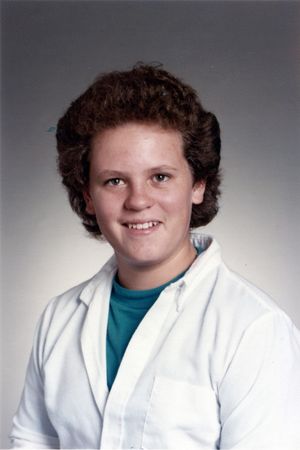
I always thought that only certain people had the physical properties to run a marathon — or to excel at any sport really. It was in the genes — something you were either born with or not. These people are called “athletes,” and I was never one of them, preferring instead to sit quietly and read a novel or watch a movie. I think that part of my inability to play team sports that involve a ball stems from a physical deficiency. I was born cross-eyed, but this was corrected via three surgeries in my infancy. My parents discovered when I was in kindergarten that I have a lazy eye — something that my nephew never lets me forget. “Uncle Jerry, why does your one eye not look at me?” he asks, making a show of turning around to see what my right eye might find more interesting. Kids. My lazy might just be an excuse, but I’ve never been very good at ball sports, nor did I like them much. It seemed as if I was destined to remain that “husky,” androgynous kid with the weird eye.
When I was a child, my father was an avid runner — they called it “jogging” back in the seventies. I remember him coming home after work, slipping on his Nikes, and hitting the three-mile route around the Sara Bay Country Club’s golf course. I’m not sure really if he enjoyed jogging itself, or the downtime that it gave him after a long day at the office. Whatever it was, he did it regularly, and he even once found a Rolex on the side of the road. At least that was his story. He wore that garish hunk of gold for years.
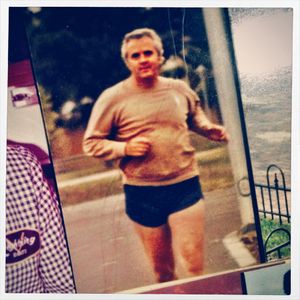
Sometimes, he’d let me tag along on my bike. At eight-years-old, I thought three miles was a long way to jog, and it presented a similar challenge for me on my Huffy. He’d pound the pavement, and I’d follow silently, enjoying the quiet time with Dad. I realize now that my Dad’s frequent jogs left a real impression on me. I never thought at that time I’d be a runner, but I’m certain this early influence was a factor in my later decision to become a runner. Running eventually became one of the values that my dad instilled in me. While Dad was devoted to his nightly runs, I wouldn’t call him an athlete. He seemed happy to jog his three miles, and he never did run a marathon.
Now my friend Kip would not likely call himself an athlete, but he ran his first marathon in Chicago on 10–10–10. Kip has always been a big guy, Looking at him, he’s not someone you’d think would be into running 26.2 miles — or even two miles, really. I visited him in St. Louis during the hot summer of 2010. Even at mid-morning, the temperature was in the upper-nineties, but we took a run anyway. By that time, I had been running for a while, and Kip told me not to worry about him, that he’d be much slower than I was used to running. We ran together for a while, but he seemed to expect me to leave him behind, so I did. Yet, the heat had me red-faced and panting by the time I completed the course, and as I cooled down, I saw Kip, slowly and steadily, complete the four-mile run. As a marathoner, Kip takes the tortoise’s approach.
It seemed incredible to me that he would complete his first marathon within a matter of months. First my brother, then Kip. I knew that I had to join the club, but just wasn’t sure that I’d ever be physically able. My theory of the athlete began to seem like an excuse.
After our run, I realized that Kip’s approach was better than mine. I was light-headed and suffering, but he seemed as if he had just finished a stroll in an air-conditioned mall. Even though Kip was big, maybe he had that athlete gene that I seemed to lack. Barring that, he understood his physical reality and approached running in a way that worked with his capabilities. I was missing something. Perhaps, like my Dad, I would just have to be happy with my three-mile runs after work.
Pizza and beer. Pizza and beer. Pizza and beer. . . .
After mile twenty, I tried to run again. Changing my gait helped a bit, but a single misstep would have my calf muscles again trying to escape and me walking again. I tried to think of anything else but the torture. I imagined the pizza and beer that awaited me after the finish, so I began a chant — pizza and beer — hoping that my mantra would both encourage and distract. Around mile twenty-two, the 4:30 pace team passed me. Pizza and beer. I knew this was my first marathon, but I was hoping to finish around four hours. The 4:30 sign became my pizza and beer, and I chased it in earnest. “I can do anything for thirty minutes,” a girl running near me told her friend after I’d been chasing pizza and beer for a mile. Thirty minutes to pizza and beer? Every step was full of lead and needles, but with my eyes on “4:30,” I pushed on. “Thirty more minutes, team!” the 4:30 coach shouted. “You can do this.” Pizza and beer.
Heather and I ran together for eighteen miles. The first half of the marathon was a breeze. Heather, Chris, and I ran through Savannah’s historic streets, greeted by signs, cheering crowds, and mossy canopies. Bands played, children waved, and volunteers made sure we runners had plenty of water, Gatorade, and GU Energy Gel. Even the citizens handed out water, orange slices, and jello shots. Though tempting, we avoided the latter. We kept up a pace between 9:30 and 10. I even remarked at about mile eight that I felt “strong.” So far, this has been my best run in a while.
Over the last couple of months my training runs had been bad. I really hadn’t been able to go further than ten miles without pain. In mid-September, I had injured my left foot. Autumn thought it may be plantar fasciitis, but the symptoms didn’t really match. It happened one random day during the sixth mile of a ten-mile run: I rounded a corner to climb a hill, and a pain like a nail entering my arch almost stopped me dead. One minute I was fine and the next I was limping.
This had happened once before in my right foot. During my convalescence that time, I read several books about running, got some zero-drop shoes, and slowly started training myself to run properly. I believe it was Eric Orton who said that in every other sport, you need to develop proper form, but we often don’t think of this for running. Why not? Just like your body doesn’t know the correct way to swing a golf club, it also doesn’t know the optimal way to run. This idea made sense, so I read his book and completed his training program. I thought I was all better and ran injury-free for a couple of years. However, this new injury cost me weeks of training, and I began to doubt that I’d even be able to finish a marathon. Perhaps I shouldn’t even try. Heather tried to be encouraging: “this type of training strains your body in all sorts of ways. You have to expect some setbacks.” Maybe, but the longest training run I had done at that point was sixteen miles. I remember thinking at the end of that run that there was no way in hell I could have gone ten more. No. Way. How am I ever going to do this?
At ten miles, we lost Chris. At twelve miles the course turned south onto this bleak section of highway, ending the roadside support and veering off into Eliot’s Wasteland. At thirteen miles Heather and I began our game. Every mile one of us would tell the other something personal that the other didn’t know. We both had a couple of good stories. Trying to think of some stories helped distract me. I think she just wanted me to shut up and stop reminding her of the distance we have yet to cover. Stupid me kept looking at my watch. “90% psychological.” Oh, yeah. Heather said, “At sixteen, it’ll be further than we’ve ever run together.” As we passed sixteen, I was still going strong, and the Savannah State students cheering us on even helped us pick up the pace a bit.
At seventeen, I started slowing down. I stopped for some water, and Heather continued forward. After my pause, I caught up to hear her turn at our story game, and just before mile eighteen, I announced that I had to walk for a bit. A veteran, she knew the significance of those words: “I’ll wait for you at the finish line,” she said, giving me a high-five. As I started walking, I thought that I just needed a minute and that I could catch back up. It didn’t happen, and she was out of sight before I knew it.
“One more mile! Go! Go! Go!”
Nothing was left but the pain and fatigue. I had given up on pizza and beer when 4:30 left me behind. Shortly before mile twenty-five, even the 4:45 pace team past me. All of my tactics for running had failed. I couldn’t maintain a pathetic jog for more than a few feet now. I was afraid if I tried, I’d be down and really out. At this point, I had to finish.
“One more mile! Go!” Some dude and his dog sat under an umbrella and shouted encouragement as I walked toward twenty-six. “You’re almost there!” His dog panted watching me try to pick up the pace. Almost there. I saw the course turn north, indicating the last few yards of the marathon. The crowds were thick behind the barricades as I approached the finish. Through the pain, I could sense the end approaching, and all I could think about was the fact that soon I’d get to sit down. I pressed on, maybe even running faster now. The crowd cheered. My legs were Play-Doh full of pins. I believe some dude with a microphone offered his congratulations as I hit the finish. High-fives. Someone handed me a medal and someone else asked me to hold it up for a photo. I walked forward, now on a quest for a spot of ground. Vendors offered Power Bars, Gatorade, Muscle Milk, bananas. I took them all in an exhausted silence. A zombie now, I just wanted a nice patch of grass.
My quest was at an end. I sat down on the grass among fellow runners, spilling my post-marathon booty on the ground. I think I cried. Whether it was from physical exhaustion or the emotion of having traversed 26.2 miles, I was overcome as I ate my banana. Someone said that bananas were good after a run. I think I ate a Power Bar, too, as I started to come back to myself. I checked my phone, and Heather had texted me that she was waiting at area “H.” I made my way over there. Smiles and hugs. Photos. Chris showed up minutes later. Group hug. I had done it. We had done it. More pictures.
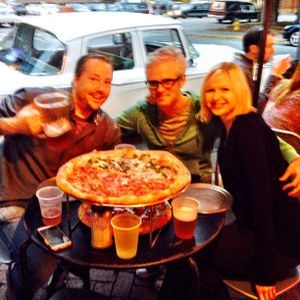
A couple of hours later, we finally got pizza and beer. We earned it. I won’t tell you how long it took us to walk to 0.8 miles to Vinni Van GoGo’s. It was worth it, though.
Running a marathon was a signature event in my life, like publishing my first article, graduating with a Ph.D., or meeting Autumn that summer day in 2003. It has significance for me. Like the above accomplishments, it was something I was unlikely to ever do. I have never considered myself particularly smart, or particularly attractive. I think many of my friends from high school still can’t believe that I’m a college professor. Similarly, many people who have known me a while and meet Autumn wonder how I got so lucky. Or what she sees in me. I often wonder that, too. Since my completing a marathon was so unlikely, it makes it all the more special. I know my final time wasn’t that great, but I made it. I still don’t consider myself an athlete by any means, but maybe I can now take “runner” off the “Unlikely In Life List” and place it with the accomplishments: writer, academic, husband, runner.
My thanks to all those who inspired me: my wife, my friends, and my family. I couldn’t have done it without you.
Now, where should I do my second twenty-six-point-two?

